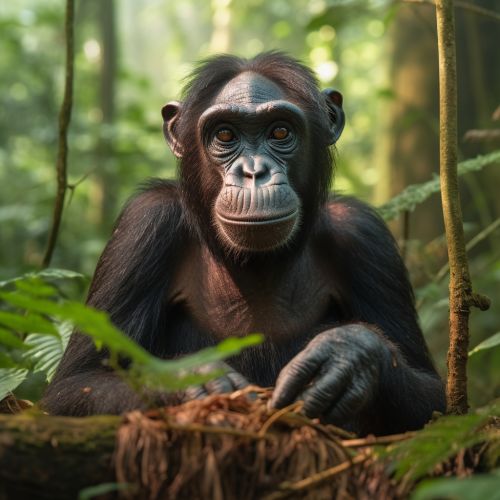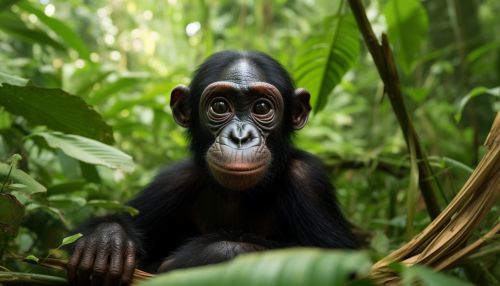Bonobo
Taxonomy and Evolution
The Bonobo (Pan paniscus), also known as the pygmy chimpanzee, is a species of great ape native to the forests of the Democratic Republic of the Congo (DRC). Bonobos are one of the closest living relatives to humans, sharing more than 98% of their DNA with Homo sapiens. They are classified in the family Hominidae, which includes humans, gorillas, and chimpanzees.


Bonobos and common chimpanzees (Pan troglodytes) are the two species that make up the genus Pan. They diverged from a common ancestor approximately 2 million years ago. This divergence is believed to have been driven by the formation of the Congo River, which separated the two populations and led to their distinct evolutionary paths.
Physical Characteristics
Bonobos are similar in size to common chimpanzees, but they have a more slender build and longer limbs. Adult males typically weigh between 34 and 60 kilograms, while females weigh between 30 and 50 kilograms. They have a black coat, a small head with a high forehead, and a pink or dark face. Unlike other great apes, bonobos have a relatively flat face, small ears, and long hair on their head that parts in the middle.
Behavior and Ecology
Bonobos are known for their peaceful and cooperative societies, which contrast with the more aggressive and hierarchical societies of common chimpanzees. They live in fission-fusion societies, where the group composition changes throughout the day. Bonobos are highly social and spend much of their time grooming, playing, and engaging in sexual activities.
Bonobos are also unique among great apes for their frequent use of sexual behaviors, which are used for conflict resolution, bonding, and greeting. These behaviors occur between all combinations of ages and sexes. This is thought to reduce tension and aggression within the group.
Bonobos are frugivorous, meaning their diet primarily consists of fruit. However, they also eat leaves, flowers, bark, stems, roots, insects, and small vertebrates. They are known to share food, which is thought to strengthen social bonds.
Conservation
Bonobos are listed as Endangered on the IUCN Red List due to habitat loss and hunting. They are found only in the DRC, where ongoing conflict and lack of infrastructure make conservation efforts challenging. Despite these challenges, several organizations are working to protect bonobos and their habitat.
